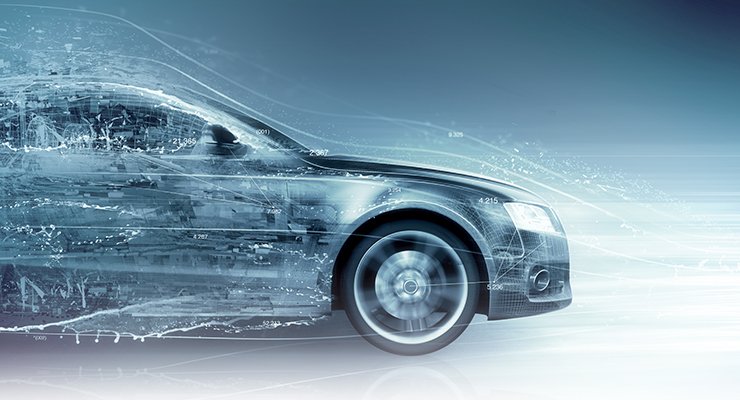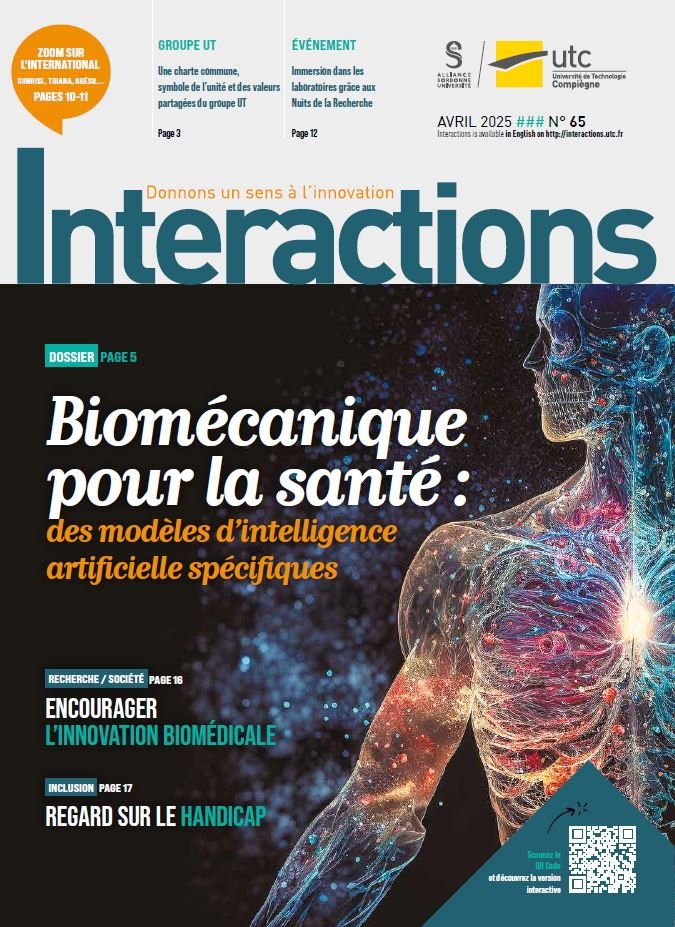Tomorrow’s glass invented at UTC-Compiegne

The UTC Chair “Smart and Transparent Surfaces for the Automobile of the Future (SITAF)”, launched in November 2019, is the first such chair to be funded by the UTC Innovation Foundation. It is an industrial-intensive chair devoted to ”smart” glass surfaces conducted in close relationship with the company Saint-Gobain Sekurit based in Compiègne.
The SITAF chair deals with various issues related to the development of the automotive cockpit of the future and more specifically with the role of glazing in it. “When we talk about the car of the future, we imagine an autonomous vehicle with innovative glazing. The technological innovations implemented within this Chair are produced by Saint-Gobain. Through these innovations, new questions arise and will lead us, as research scientists and engineers, to framing new problems and proposing new tools to solve them. It is our role to translate the problems posed by industry into scientific questions”, explains Delphine Brancherie, a lecturer-cum-research scientist at UTC’s Roberval laboratory, who has been in charge of scientific coordination since 2020. The research work was carried out through two theses by PhD students supervised by lecturer-cum-research scientists from the Roberval and Heudiasyc laboratories.
In the Roberval mechanical engineering laboratory, an acoustic thesis is being conducted by Alexandre Berthet, aged 27; it relates to the development of super-elements for the dynamic simulation of viscoelastic multilayer structures. “The aim is to respond to an important problem raised by industry, namely confidentiality. The subsystem we are interested in here is the windscreen, made up of an assembly of glass layers and an intermediate polymer layer, the viscoelastic behaviour of which must remain confidential in order to be able to exchange numerical models with car manufacturers”, he explains. “Within the framework of the Chair, the development of super-elements for the windscreen was the subject of my thesis work, which began in November 2019 and was defended last December, the main objective being to enable the exchange of glazing models while ensuring the non-disclosure of confidential information.”
Deciphering encoded data
Antoine Montesinos’ internship dealt with the optimisation of a method aimed at reducing the numerical model of a car windscreen. The post-doc of Christophe Langlois, 29, is entitled “Experimental identification of the dynamic behaviour of a car windscreen and reverse engineering process from a reduced model”. It was conducted from February 2022 to February 2023. “My work consisted of detecting what is hidden, in finding the mechanical properties of the encrypted windscreen model. This is called reverse engineering. The purpose here is to evaluate the possibility of identifying the mechanical characteristics of confidential materials from the supply of the windscreen model alone.
For the industrialist, contributing to the generation of a state of the art on reverse engineering methods applied to laminated structures containing a viscoelastic material, but also of experimental results from the vibratory analysis of a laminated structure and comparing them with numerical results is very interesting. “We are very demanding on the performance of our glazing. They must be the best to ensure the safety of the occupants and provide them with optimum comfort in the car. To achieve this, we want to co-develop innovative solutions with car manufacturers while retaining control of the materials and technologies used in the glazing. Within the framework of the chair with the UTC, we have therefore chosen to develop an encryption method that will enable us to make the essential properties of our glazing available to car manufacturers. The research work on deciphering data aims at verifying the robustness of this encryption method and thus of our technological mastery. The chair with the UTC is very important for us beyond the scientific work, as it puts us in touch with a pool of talent and a whole ecosystem of skills. This provides a great opportunity for Saint-Gobain,” says Jérôme Gilles, deputy director of Saint-Gobain Recherche Compiègne. The UTC Roberval laboratory had already forged links with the Saint-Gobain Group on other projects involving glass and metal.
“The research work is bearing fruit. We know the Saint-Gobain company well. For doctoral students, a thesis is also training, for example in numerical modelling,” concludes Jean-Daniel Chazot, head of the acoustics and vibration for engineers in the mechanical engineering department of the Roberval laboratory.
In the beginning, there is the UTC Foundation for Innovation
The UTC Foundation was the catalyst that allowed to bring together industrialists and UTC academic skills in a partnership approach favourable to build projects and explore tomorrow’s technological solutions alongside the actors of innovation. The Foundation, created in 2018, finances and supports this Chair. “The Chair on intelligent glass surfaces was the first programme supported by the Foundation. It is a strong marker of a privileged and lasting partnership with the Saint-Gobain group, a historical player in the region for its glass activities. It is also a world actor in innovation, essential both in research to advance on the technological stakes of tomorrow, and in training: many student-engineers of the UTC carry out their internship there, and many graduates join the group”, underlines Sylvie Lemonnier-Morel, General Secretary of the UTC Foundation for Innovation. The vocation of the Foundation is indeed to raise funds, to promote by its actions the development of the UTC and to support innovative projects which are meaningful for the society.
An “augmented reality” thesis at Heudiasyc
In March 2023, Baptiste Wojtkowski, 26 years old, will submit his thesis entitled “Validation of multimodal
for the multisensory cockpit in an immersive virtual environment in the case of driver inattention.” He was supervised by Indira Thouvenin, a lecturerresearch scientist from the UTC-Heudiasyc laboratory and Veronica Teichrieb from the Voxar Labs in Brazil, but also by Pauline Merveilleux with the Saint- Gobain Group. “Industrialists have realised that fully autonomous vehicles will not be possible in the near future. These vehicles still need to be taught how to handle complex situations such as a lack of road markings, faulty vehicle sensors, how to accelerate and slow down and, above all, how to inform the driver of the reason for taking back control, in short, to ensure that the driver understands,” summarises the computer engineering student. It was mainly these last two aspects that interested us. I have really enjoyed working on this subject for the past three years in a laboratory with a high quality scientific team. The Region co-financed this thesis, via Feder funds, as did Alexandre Berthet’s acoustics-based thesis.
The Heudiasyc laboratory and the multisensory cockpit
Three questions to Indira Thouvenin, a teacher-researcher from the UTC-Heudiasyc laboratory who co-supervised with Veronica Teichrieb from the Voxar Labs in Brazil, a thesis entitled “Validation of multimodal feedback for the multi-sensory cockpit in an immersive virtual environment in the case of driver inattention”.
What is the research context that led to this thesis?
It is known today that the autonomous vehicle presents too great a risk, and that the presence of the driver is required in certain complex or ambiguous situations. This is known as the highly automated vehicle (HAV), which allows the driver to take back control of the vehicle. Regaining control is a complex cognitive task involving a transfer of knowledge from the automat back to the driver. We therefore propose aids with augmented reality displayed on the windscreen. These aids must adapt to the situation but also to the driver’s attention (or inattention), otherwise the driver will no longer look at them or will be disturbed by these permanent displays. We therefore need to describe the driver’s state, with sensors but also a model that takes into account his state, his actions and his gaze in order to generate feedback at the right time and in the right place on the windscreen. Our semi-autonomous driving simulator allows us to test scenarios, to display adaptive feedback in a virtual environment and to check that this feedback helps to regain control, on a motorway for example.
So what is your scientific contribution to the industrial reality of the Saint-Gobain Group?
Our scientific contribution is to propose a model that will be useful for intelligent glazing because the surface of the windscreen becomes an augmented reality interface. Many projects already exist on this theme and are industrialised. But what we are providing are descriptors of the driver’s state, for the motorway driving situation. We are also providing proof that the model is useful, because we are testing it in a simulator and we have results on the interest of our approach. UTC-Heudiasyc is a joint research unit — between the CNRS and the UTC. This project is part of the “Autonomy of mobile robots in interaction with humans” theme. The objective is to control and navigate an autonomous system in an open and complex environment and to study how the robot can gain autonomy in the presence of the human operator.
How is the thesis “Validation of multimodal feedback for the multisensory cockpit in an immersive virtual environment in the case of driver inattention” relevant to the automobile of the future?
The VHA becomes a multi-sensory cockpit, a sort of cabin equipped with sensors, visual and audio displays, or even allowing the driver to feel the touch of the system. This can be compared to the cabin of an aircraft in which the autopilot is in control. But the pilot has to stay alert and intervene quickly in case of a problem. Humans cannot quickly check all the sensors, and need so-called adaptive interfaces, i.e., they adapt to their state at a given moment. These are multimodal interfaces because they are also in visual mode, sound mode and haptic mode, which is the sense of touch.




